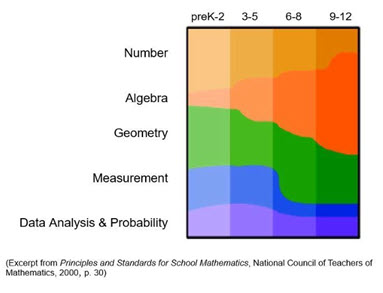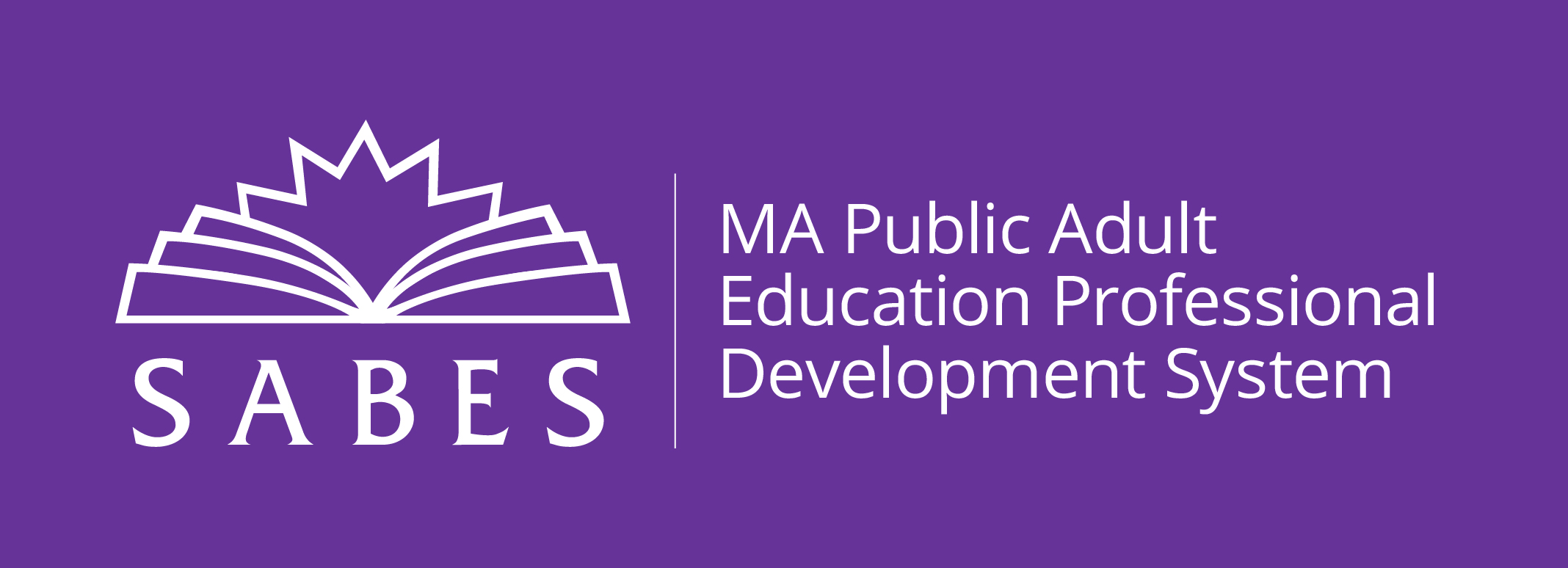 When we developed the Curriculum for Adults Learning Math (CALM), we knew we needed to show the coherence of the math domains across levels. In the graphic pictured here, you can see the coherent flow of preK–12 learning across domains. This coherent flow of learning is key for your students, too. Adult learners greatly benefit from learning about all strands at all levels. Doing so helps them build on content they know and connect ideas.
When we developed the Curriculum for Adults Learning Math (CALM), we knew we needed to show the coherence of the math domains across levels. In the graphic pictured here, you can see the coherent flow of preK–12 learning across domains. This coherent flow of learning is key for your students, too. Adult learners greatly benefit from learning about all strands at all levels. Doing so helps them build on content they know and connect ideas.
It’s also vital for your students to develop and connect digital literacy skills to the content and contexts in which they are learning. Imagine adding the following phrase to the beginning of each domain above, “Apply the skills associated with using technology to enable users to find, evaluate, organize, create, and communicate information with Number Sense, Algebra, Geometry, etc.”
The following three tips can help you weave digital literacy into all levels of math learning:
- Engage your students in using technology, such as spreadsheets or charts, to help them organize data and describe an observed pattern.
- Share digital tools with shapes and animation with your students to help them communicate their understanding of the surface area of cylinders and the polygons that form cylinders.
- Guide your ABE 1 and 2 students in using digital literacy to find and display examples of shapes and to explore real-life examples of perimeter.
What is Digital Resilience and Why Is It Important?
In today’s wired world, digital resilience is key. If you’re not familiar with the term, here’s a helpful definition from the Digital U.S. Coalition’s report, Building a Digitally Resilient Workforce: Creating On-Ramps to Opportunity (2000, p. 6):
Digital resilience signifies having the awareness, skills, agility, and confidence to be empowered users of new technologies and adapt to changing digital skill demands. Digital resilience improves capacity to problem-solve and upskill, navigate digital transformations, and be active participants in society and the economy.
The same report points out a key element to this work: sustainability. In the words of the authors, “Creating an ecosystem that will support learner-workers in obtaining the digital skills they need is an important first step. But if we treat digital literacy as an endpoint, it won’t be enough.” That’s why it’s essential to integrate digital skills fluidly for all learners and all content areas.
If your students know the English alphabet and a few words, you don’t consider them fluent in English. If your students know how to count, write whole numbers 0 to 100, and identify their respective place values, you don’t consider them numerate. It’s clear your students need more English language understanding. Or, they need to know how to use the number system in the world around them. The same is true for digital literacy knowledge and skills.
You play a vital role in your students’ digital fluency and resilience. You can help prepare them to use technology to solve problems at home, school, and work, as well as in personal finance and health care decisions.
The SABES Math PD Center Has Resources to Help
Our job is to support YOU, so you can support your students. Explore our resources:
- Would you like to weave math, science, culturally responsive teaching, and digital literacy into one lesson? Try our new PD and lesson plan, A Degree of Change: Exploring Global Climate Change. This workshop guides you through the materials and several student activities. It also introduces you to a student project that includes online research and a small group presentation using the provided slow-reveal graphs. Materials are also suitable for offline learning.
- Would you like to build your students’ digital, mathematics, and decision-making skills? Check out our complete, 10-lesson, project-based unit and workshop! Be Your Own Boss: Use Math (and Internet Research) to Take Charge of Your Decisions will prepare your students to use math and reasoning to make big decisions. Through video recordings of student business owners, it teaches about small business ownership. It also includes a Google Classroom you can duplicate.
We know that trying new tools and approaches can be daunting. But you don’t have to go it alone! Our Center can provide one-on-one coaching, lesson modeling in your classroom, and tech support. We’re just an email away (adultnumeracy@terc.edu). We welcome your questions, PD requests, ideas, and coaching requests. See you soon!


